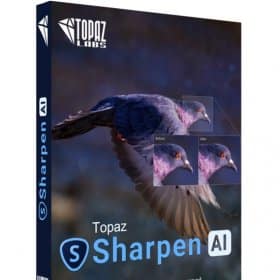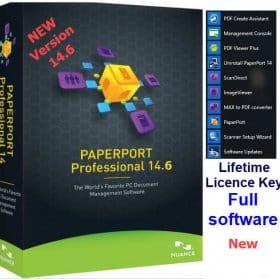Description
VMware vSphere Cloud Service Provider Lifetime license keySphere Cloud Service Provider?
VMware vSphere is a complete cloud-computing platform that allows you to create, manage and maintain your virtual environments. VMware vSphere is the most popular virtualization platform and unifies advanced tools into a single interface to build, run and manage virtual machines. It offers advanced functionality for both enterprise and small installation environments. The Cloud Service Provider (CSP) version of vSphere is built for service providers who desire robust and scalable virtualisation for their clients.
This lifetime ‘activation’ license key for Windows ensures that you can get it set up once, and then use it forever without having to pay again. VMware vSphere Cloud Service Provider License Key: Your ticket to the virtualisation and cloud realm.
Imagine having a tool that give you full control on your virtual world. You can manage and run virtual machines in just a few clicks. Whether it is for business or for data centre operations or for your own virtualization environment at home, VMware vSphere Cloud Service Provider brings flexibility and scalability to your hands. And with Windows lifetime activation license key, you dont have to worry about renewals and additional costs.
VMware vSphere is your key to a more efficient, more manageable server virtualisation platform. Let us show you how to make the most of your hardware and design a virtual environment that stands out from the rest.
VMware vtional subscription fees or renewals What this means is that you won’t need to pay any fees (maintenance or otherwise) to vSphere after you buy it, making it a very inexpensive way of getting your hands on the power of virtualization.
Key Features of VMware vSphere Cloud Service Provider
- Centralized Virtual Machine Management: But one of the things that sets vSphere apart is its centralized management, which allows you to manage multiple virtual machines from a single location, whether it be a data centre or a public cloud such as Amazon Web Services. This makes IT admins’ lives so much easier, as they have a single pane of glass called vCenter Server to create, configure, manage and monitor their entire virtual machine workloads.
- Think about being able to see how everything is running, how resources are being used, where to allocate storage and how you can configure your networks – all from a single vSphere console. Its centralized management means that with a few simple clicks, you can perform tasks. If your organization has specific requirements, every box is ticked, and you can configure it to your precise needs. You don’t have to dig up endless menus and obscure settings, just to perform simple actions. In vSphere, everything is right there for you in a simple-to-use format.
- Resource Optimization and Load Balancing: If you’re running a virtual environment, you’re constantly balancing resources. The Distributed Resource Scheduler (DRS) is a wonderful tool to automatically level your loads across the virtual environment. If you have a set of shared resources (CPU, memory, network, etc) and any virtual machine needs more of a resource, it will get it. DRS works in the background to spread the load across all VMs and clusters of VMs, all on a per-resource basis. So, if you’re running a few VMs with demanding applications, or just a handful of services, it will keep everything running as efficiently as possible at all times.
- And Storage DRS (Distributed Resource Scheduler) can help dynamically manage your overall storage utilisation, ensuring that data is spread across multiple storage volumes so you don’t end up overloading one element while others sit idle. It’s about preventing bottlenecks and boosting performance.
- High Availability and Disaster Recovery: One of the greatest value propositions of vSphere is the high availability (HA) and disaster recovery features. We would all prefer not to think about systems going down, but they do from time to time, and VMware vSphere ensures you’re covered if the worst happens. The High Availability feature automatically restarts virtual machines on other hosts within the environment if a host where the VM is running fails, and therefore minimises downtime and keeps services up and running.
- Likewise, VMware vSphere Replication provides a built-in, real-time disaster recovery solution, where your virtual machines are replicated in real time to another location. So, in the event of a hardware failure, or in the event that a meteor hits the data centre, your data is 100 per cent safe, and the virtual machines can be restored in a matter of minutes. There is no substitute for peace of mind that your virtual environment is prepared for anything.
- Efficient Resource Pooling: Perhaps the most important benefit of vSphere is that it can dynamically pool the available resources from the hardware in the solution. You can establish a resource pool in which a group of virtual machines can be allocated memory, CPU and storage resources according to each virtual machine’s requirement, thus optimising the installed hardware and avoiding starvation of resources for any given virtual machine.
- This feature is especially useful for service providers because it enables you to map resources to customers, packaging multiple customers on the same infrastructure without any customer impacting another’s performance. It’s a practical way to make sure all your customers are allocated the resources they need, while not wasting precious compute cycles.
- Scalability: Bringing your environments to scale is the fundamental feature of VMware vSphere. Whether you need to manage a small virtual environment or a giant data centre, you can do it with vSphere scalability. Start with 10 virtual machines and increase to 2,000 if your needs grow. vSphere Distributed Switch (vDS) enables you to configure and manage a single logical network throughout the whole vSphere environment. In any huge infrastructure in the world, you’ll never notice its size.
- The other aspect of the solution where scalability goes hand in hand is clustering, which involves the ability to chain multiple hosts together. This enables the creation of huge clusters of virtual machines that can be managed through a single console, and this is precisely what large enterprises and service providers need.
- Security and Compliance: Security is always a top priority and VMware vSphere secures your virtual machines. VMware AppDefense gives you security that understands how your applications should run, and protects them from anything they’re not supposed to do. VM Encryption helps secure your data by encrypting your virtual machines and disks.
- For companies which must adhere to certain standards, vSphere provides ways to comply with those standards. You can configure policies to comply with certain standards, and generate audit logs to show that you comply.
- Snapshot and Clone Capabilities: Two of my favourite features of the vSphere management software are snapshot and clone. Snapshot lets you capture the entire state of a virtual machine at any point in time. This is useful because if something goes wrong during an update or when you change a configuration setting, you can easily revert to the last known good state without any problems.
- Similarly, if you have a bunch of virtual machines, cloning enables you to create 100% identical copies of an existing virtual machine; if you need to deploy 100 of the same environments, cloning takes mere seconds to spin up exact copies of the original machine. Want to test or train on an exact copy of a production environment? Clone it.
- vMotion: Zero Downtime Migration: It was a fantasy for many IT admins to be able to move virtual machines from one host to another without getting any downtime and with vMotion, it is reality. vMotion allows you to migrate a running virtual machine from one physical server to the other without any downtime. You can use it for maintenance, such as when you have to replace a hardware component, or you can use it to balance the workloads without disrupting your services.
- vMotion also means that applications are able to operate in the background as users continue to work with the same computer. Business can go on as usual, even as you’re switching data centres, storage, and the like. Such flexibility is essential to those service providers. They can’t afford a break in service.
- Integration with Third-Party Services: One of the main advantages of vSphere is the fact that it integrates very well with other VMware products. It’s a natural fit and works well with other VMware services and solutions. However, VMware’s virtualisation software also integrates perfectly with a lot of third-party services and solutions as well, so you can select your favourite tools for backup, monitoring and management, and create your virtual environment just the way you like it.
- If your business consumes any of the big cloud services – Microsoft Azure, Amazon Web Services (AWS) – or uses any of the others, vSphere is the bridge that extends your on-premise virtual environment into the cloud, enabling the hybrid-cloud agility that enterprise businesses need as they consider multi-cloud strategies.
Why Choose VMware vSphere Cloud Service Provider License?
Lifetime Activation: Rather than a subscription – which forces you to renew every year – this lifetime activation licence is a one-time purchase. You activate vSphere once, and then you’re good for life. Ideal for those who want a one-and-done, all-in-one virtualisation solution.
Affordable For Service Providers: If you are managing multiple client environments, the Cloud Service Provider version of vSphere is built for you. You can provision resources effectively across clients, ensure high availability and provide a solid virtual infrastructure – without breaking the bank.
Complete Control: vSphere offers complete control, with features such as centralised management, Dynamic Resource Scheduling (DRS), high availability, vMotion and other such features. You can create, move, scale or clone a virtual machine as needed, and ensure that everything runs as smoothly as possible.
Multiple use cases: VMware vSphere isn’t just for enterprise-level companies. You can use it for the purpose of testing, software development, operating multiple operating systems, and much more. Being able to create a snapshot and clone of your VM is great for testing software without affecting the stability of your main setup.
Scales with you: Whether you’re starting small or already running a huge virtual infrastructure, vSphere scales with you.
Integrated Security: Keep your data and virtual machines secure with vSphere’s integrated security features.
How to Make the Most of VMware vSphere
- Use Resource Pools: Create resource pools to make sure each virtual machine gets the CPU and memory it needs. This will spread the load and prevent a single VM from gobbling up more than its share.
- Snapshots for Testing: If you are trying out new configurations, make Snapshots before you do anything. This way, you can roll back very quickly if something goes wrong.
- Automate with vCenter: Leverage the power of vCenter Server to automate management tasks, schedule back-ups, and keep your environment operating without human intervention.
- Keep things organised: Tags and folders in vCenter keep things well organised when you’re running hundreds of VMs.
It is a best tool for anyone who manages virtual environments. It is used for maximum utilization, maximum availability, vMotion provide zero downtime migrations and provides scalable clusters.
VMware vSphere Cloud Service Provider is designed to help you streamline and automate your virtualization workflow. And with a lifetime license key for Windows, you can install it once and not worry about monthly or annual fees for as long as you are using it.
If you’re an IT admin trying to get rid of extra steps and manual processes, a service provider wanting to better manage all your customers, or a business looking for a better way to run your infrastructure, these are the tools you need from vSphere to build a flexible, secure, and scalable virtual world. No renewals. No surprises. No messing around. Just powerful virtualization made simple.





















